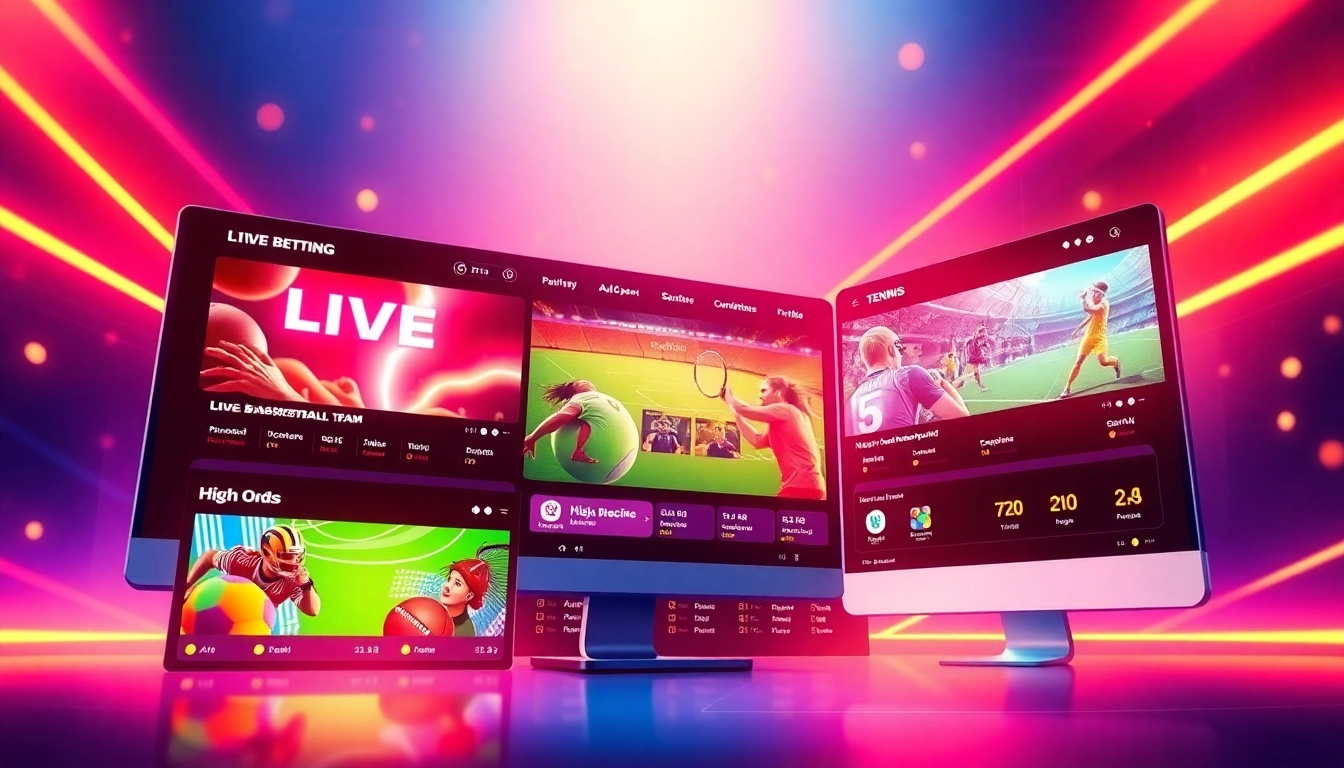Understanding the Evolving Landscape of Sports Streaming: The Role of streameast
Overview of Streameast’s Services and Features
In the dynamic world of sports entertainment, fans crave instant access to their favorite matches, fights, and tournaments. Streameast has emerged as a leading platform catering to this demand by offering free, high-quality live sports streams. Cutting through the clutter of numerous providers, streameast provides a comprehensive hub where users can access a wide array of sports content without the hassles of subscriptions or registration requirements. Its core features include streaming a variety of sports such as football, basketball, baseball, UFC, WWE, Formula 1, and more, directly in HD quality. The platform promises minimal barriers—no sign-ups, no payments, and no intrusive ads—making sports viewing seamless across devices like smartphones, desktops, and smart TVs. The reliability of streams is paramount, and streameast utilizes optimized servers and multiple mirror links to ensure consistent accessibility. Its interface is user-friendly, allowing fans from around the globe to follow leagues like the Premier League, NFL, La Liga, Bundesliga, and international tournaments in real-time. Whether on-the-go or at home, users enjoy smooth streams with minimal buffering, enhancing the overall viewing experience.
Market Position and Audience Engagement
Before its recent shutdown, streameast held a dominant position within the sports streaming community, largely owing to its extensive content library and free access. Its strategic positioning addressed a significant gap—fans wanted instant, cost-free access to live sports without the complications widespread among legal streaming services like FuboTV or Xfinity Stream, which often involve subscriptions and geographic restrictions. The platform’s engagement was fueled by its accessibility, especially appealing to international audiences seeking coverage of global leagues and events. User-generated content, social media buzz, and community forums further amplified its reach, creating a highly engaged user base that relied on streameast for real-time updates. Despite ongoing legal pressures and platform shutdowns, alternative communities continue to discuss and share legitimate legal channels, underscoring the persistent demand for free or affordable sports streams. This loyalty and the community-driven nature underscore the importance of building a responsible, sustainable streaming model that prioritizes copyright compliance while maintaining user engagement.
Legal Challenges and Platform Evolution
Streameast’s meteoric popularity was ultimately curtailed by legal investigations into its operations. As one of the largest illegal sports streaming platforms, it faced scrutiny over copyright infringement, ad-laundering schemes, and piracy laws. Reports indicate that extensive investigations uncovered a $6.2 million scheme linked to illicit advertising revenue, which led to its forced shutdown in 2025. The platform’s illegal nature served as a double-edged sword: it provided free access but exposed users and operators to legal risks. Its shutdown reflects broader efforts to combat online piracy and enforce intellectual property rights globally. In response, legal streaming services are innovating to meet user expectations by offering affordable, high-quality, and reliable streams, pressing the market toward legitimate solutions. The evolution of streameast illustrates the necessity for both platforms and consumers to prioritize legality and security, promoting a shift from illegal streams to authorized services that safeguard user data and uphold rights holders.
Best Practices for Streaming Sports Content Effectively
Ensuring Stream Reliability and Quality
To deliver top-tier live sports experiences, streaming platforms must prioritize reliability and quality. This entails deploying robust Content Delivery Network (CDN) infrastructure that distributes streams across multiple servers, reducing latency and buffering. Servers should be geographically dispersed to minimize lag, especially during high-traffic events like the Super Bowl or FIFA World Cup. Adaptive bitrate streaming dynamically adjusts video quality based on the user’s internet speed, ensuring continuous playback without interruptions. In addition, maintaining a vast array of mirror links and backup streams provides redundancy, ensuring roughly 99.9% uptime. Poster image optimization, minimal ad loads, and clear interface cues guide viewers seamlessly, minimizing frustration. Regularly monitoring stream health through analytics and real-time feedback enables quick problem identification and resolutions, fostering trust and loyalty among users.
Optimizing User Experience for Mobile and Desktop
An intuitive, responsive design is crucial for user retention. Mobile-first strategies ensure that layouts adapt gracefully across different screen sizes, providing easy navigation and controls. Features such as picture-in-picture mode on smart TVs and Android devices allow users to multitask or keep watching while browsing other content. Fast-loading pages, minimal buffering times, and optimized video encodings improve performance. Accessibility features like closed captioning, adjustable video quality, and simplified interfaces cater to diverse user needs. Implementing intelligent algorithms that recommend popular streams or personalized content enhances engagement. On the backend, web developers should optimize loading speeds through efficient coding, compressed images, and leveraging browser caching. This holistic approach creates a frictionless, enjoyable streaming environment for all users irrespective of their device.
Maintaining Accessibility Without Sign-Ups or Fees
One of streameast’s appealing aspects was its accessibility—no sign-ups, no fees. To replicate this convenience legally, platforms should focus on providing open access via transparent URLs or embed players hosted on secure, authorized servers. Simplified user interfaces that require minimal interaction encourage spontaneous viewing. Quick link sharing through social media and direct integrations enable fans to distribute streams effortlessly. Security measures like encrypted streams prevent unauthorized access, but they should not impede ease of use. Legal platforms can also incorporate lightweight login options for personalization without creating barriers to accessing streams. By maintaining simplicity and openness, streaming providers can uphold user expectations while adhering to copyright laws and ensuring safety from malicious content or malware.
Comparing Legal Alternatives to Streameast
Top Legal Platforms for Live Sports Streaming
With streameast’s shutdown, fans are increasingly turning to legitimate sources. Notable options include FuboTV, which offers extensive sports coverage, including NFL, UEFA, and more through affordable subscription plans with free trials. Other reliable services include DAZN, ESPN+, and NBC Sports, each providing high-quality streams supported by licensing agreements. Many of these services offer on-demand content, cloud DVR, and multi-device streaming, ensuring flexibility. In addition, emerging platforms like SBS On Demand or Hulu + Live TV are broadening coverage options. Legal platforms are investing heavily in technology to deliver ultra HD streams, low latency, and integrated social features, making them competitive alternatives to illicit streams.
Advantages of Authorized Streaming Services
Legal streaming services safeguard users from malware, scams, and data breaches often associated with illegal sites. They ensure content rights are respected, supporting creators and broadcasters. Moreover, legal platforms provide consistent stream quality, customer support, and features like live stats, multi-angle viewing, and interactive elements. Subscriptions or single-pay models are transparent, and service providers are subject to regulatory oversight—offering peace of mind. These platforms also promote sustainable sports culture by compensating rights holders, fostering the production of high-quality sports content, and supporting innovations like AR and VR viewing experiences. Transitioning to legitimate streams helps maintain the integrity of sports broadcasting and enhances overall user satisfaction.
How to Transition Safely from Illegal to Legal Streams
Beginners often rely on free streams originating from illicit sources, but switching to licensed services requires awareness. Start by evaluating reputable providers offering free trials or affordable monthly plans. Research user reviews and verify platform legitimacy to avoid scams. Use official apps or websites (like streameast’s alternatives) and avoid suspicious links or pop-ups. Install security software, enable two-factor authentication, and keep devices updated to prevent vulnerabilities. Educate yourself on geographic restrictions and consider using legitimate VPNs to access services legally in your region. Participating in online forums or communities focused on legal sports streaming also guides best practices for safe transitions. Ultimately, embracing authorized platforms supports fair sports broadcasting and promotes a safer, more reliable viewing experience.
Implementing Effective SEO Strategies for Sports Streaming Websites
Keyword Optimization and Content Structuring
Targeted keyword integration is vital for increasing visibility. Incorporate primary keywords like streameast naturally within headings, subheadings, and core content, focusing especially on key search intents. Use secondary keywords such as “live sports streams,” “HD sports online,” or “free sports streaming” to broaden reach. Content should be well-structured with clear sections, bullet points, and descriptive metadata. Implement schema markup for sports events, which helps search engines understand content specifics and enhances rich snippets appearance. Regularly updating content with fresh data—such as upcoming matches, recent results, or platform updates—favors higher rankings and better user engagement.
Improving Site Authority and Trustworthiness
Authority builds through quality backlinks, authoritative content, and consistent domain reputation. Outreach to respected sports blogs, news outlets, and tech review sites fosters inbound links. Publishing detailed guides, case studies, or industry insights positions the site as an expert. SSL encryption secures user data, boosting trust signals. Displaying trust badges, user testimonials, and transparent policies further reassure visitors. Engaging on social media and maintaining an active presence helps build community trust and drives organic traffic. Credentials such as accreditation by recognized industry bodies can also enhance credibility, ultimately contributing to higher search rankings and user confidence.
Leveraging User Engagement and Social Proof
Active user engagement is crucial. Incorporate comments sections, real-time chat support, and social sharing buttons to foster community involvement. Reviews and ratings provide social proof, influencing new visitors’ trust. Regularly analyze user behavior via analytics tools to understand preferences and optimize content. Introducing features like personalized recommendations, notifications for upcoming matches, or exclusive content keeps users returning. Additionally, partnering with sports influencers and bloggers helps generate authentic endorsements, broadening reach and reinforcing credibility. The combination of engagement and social proof creates a vibrant, trustworthy platform aligned with user expectations and SEO best practices.
Future Trends in Live Sports Streaming and User Expectations
Emerging Technologies Enhancing User Experience
Advancements in 5G connectivity promise to revolutionize live sports streaming by enabling ultra-low latency, high-definition streams on mobile devices. Augmented Reality (AR) and Virtual Reality (VR) are becoming more prevalent, allowing fans to immerse themselves in virtual stadiums or experience multiple camera angles. Artificial Intelligence (AI) improves personalized content recommendations and dynamic ad targeting, making streams more engaging and relevant. Cloud-based solutions improve scalability and reduce buffering, ensuring high-quality delivery even during peak traffic. Screen mirroring and smart TV integrations expand accessibility, making live sports viewing more interactive and accessible than ever before.
Regulatory Changes and Compliance Strategies
As governments tighten regulations against illegal streaming, lawful compliance becomes essential. Implementing geo-restrictions that honor licensing agreements, integrating DRM (Digital Rights Management), and adhering to local content laws help avoid legal repercussions. Platforms must also prioritize user privacy through transparent data handling policies in line with GDPR or CCPA standards. Regular audits and collaboration with industry bodies ensure ongoing compliance. Embracing these changes not only avoids shutdown risks but also builds trust with advertisers, sponsors, and users seeking secure, legal entertainment options.
Building a Sustainable Streaming Platform
Sustainable platforms focus on balancing quality, legality, and profitability. Subscription models supplemented with ad revenue enable free access while respecting copyright laws. Investing in diversified content portfolios and localization increases user retention. As the industry evolves, partnerships with broadcasters and sports leagues can grant official licensing rights, ensuring long-term legitimacy. Prioritizing technology upgrades, user safety, and compliance fosters enduring trust and profitability, paving the way for a resilient sports streaming ecosystem that satisfies user demands legally and securely.

